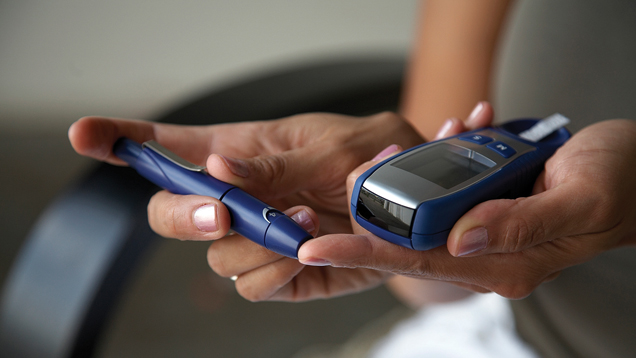Turning your skin into insulin, with science
 CREDIT: PURESTOCK / THINKSTOCK
CREDIT: PURESTOCK / THINKSTOCKCalifornia scientists are nearing a cure for diabetes; they were able to coax human skin cells to convert into human pancreatic cells, which are capable of producing insulin.
We are only a few weeks into the new year and the research world has already kicked themselves into high gear. Here’s what all those scientists have been keeping themselves busy with over the holidays.
A cure on the horizon for diabetes
California researchers have been able to coax human skin cells to convert into human pancreatic cells that are capable of producing insulin, a first for cellular researchers worldwide.
Not only was the team able to stop the onset of a type of mouse diabetes in trials, which modelled human type II diabetes, they were also able to cause massive cell division of the newly converted pancreatic cells numbering in the trillions without any indication of tumour formation.
By adding specific growth factors and chemical compounds, the team was able to first revert the human cells back to multipotent endoderm progenitor cells. These are precursors to cells, which make up a number of organs including the entire GI tract, lungs, liver and pancreas.
The find could eventually lead to more personalized means of dealing with the disease, and maybe even an effective cure for the 382 million people suffering worldwide from both forms of diabetes.
Hydrogen joins the metal party... sort of
In a worldwide first, Scottish researchers have been able to force hydrogen into a solid-like state, something first proposed over eight years ago.
The achievement was accomplished after using over 350 gigapascals of pressure to force two diamonds together, or about 3.4 million times that of the Earth’s atmosphere at sea level.
Hydrogen gas (H2) was placed between the two diamond tips called anvils, which were pushed together with enough force to literally crush the atoms together into a semisolid state by beginning to break the bonds between the diatomic hydrogen. The newly created state of matter was named phase V.
The team didn’t want to explicitly state the new type of matter was a solid, but officially said, “Phase V may be the precursor to the non-molecular (atomic and metallic) state of hydrogen” in an article published in Market Business News in early January.
Because of the relatively low temperatures needed, around 125 degrees Celcius, scientists are excited for the numerous electronic uses including superconductors, and super strong magnets.
Currently, the process only works on the micron scale, or about the size of a red blood cell, but another important aspect is the confirmation that metallic hydrogen is possible, a key assumption when trying to understand the interiors of Jupiter and other large planets.
SpaceX lands on barge, but fails to remain vertical
Who can forget SpaceX? Coming off the first successful reusable rocket landing of their Falcon 9 rocket, the company tried again to land their reusable first stage on an offshore barge, where SpaceX CEO Elon Musk is hoping to eventually land all future rockets.
While the Falcon successfully landed, one of the four leg struts failed to lock into place, causing the entire rocket to keel over and explode which Musk tweeted was probably due to ice build-up from heavy fog during launch.
While the landing ultimately failed, the Falcon 9 did successfully launch its payload into space, the Jason 3 ocean studies satellite into a geosynchronous orbit, allowing the satellite to continue an unbroken 20-year record of continuous ocean level height monitoring from space.
Between a possible cure for diabetes and diamonds crushing hydrogen into a warm slush, January is already shaping up to be quite an interesting year. Here’s to another 11 months of spectacular scientific discoveries.














